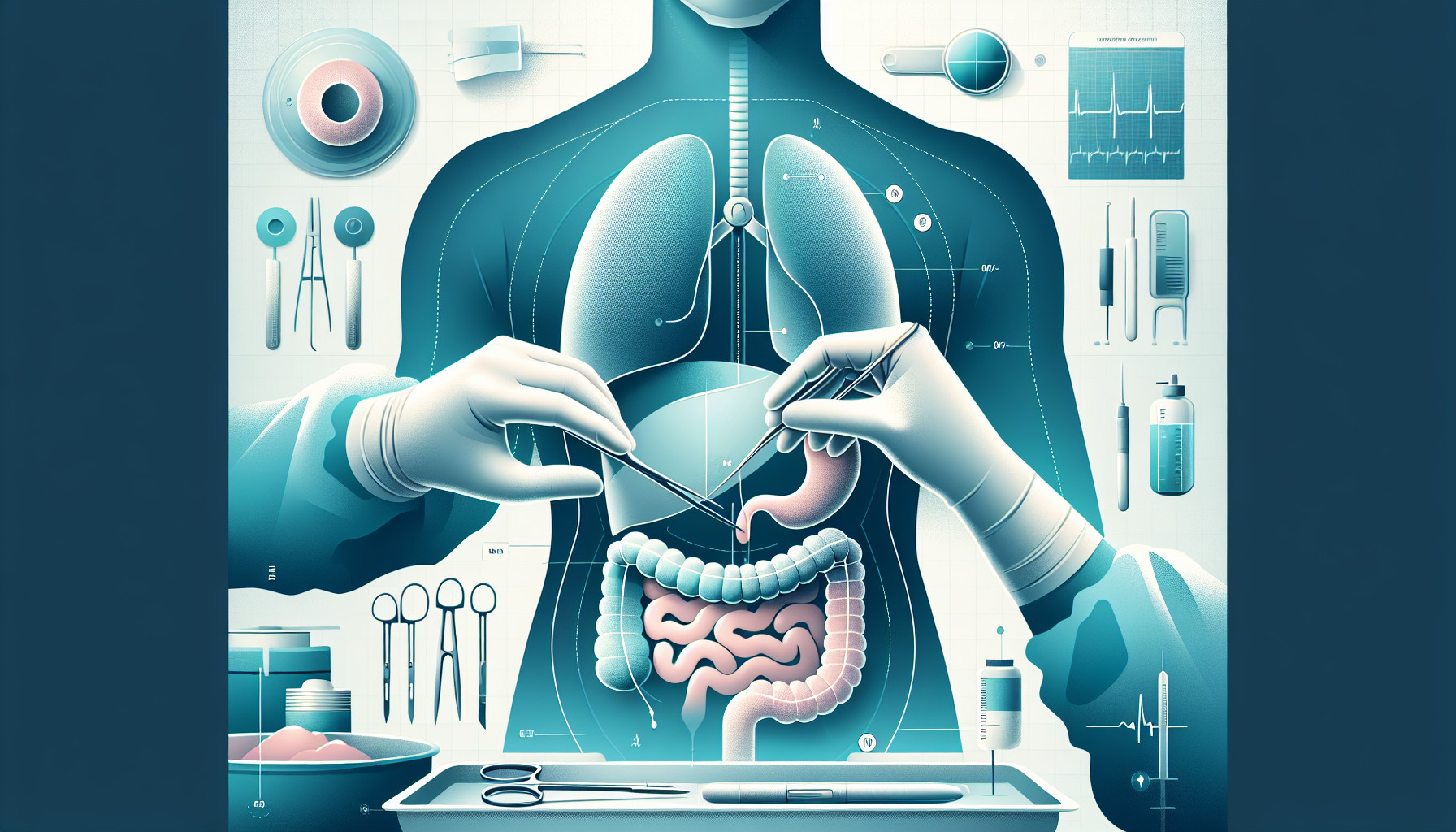Our Summary
This research paper looks into a condition called a hiatal hernia (HH), which occurs when parts of the stomach push through an opening in the diaphragm. The standard way to fix this is through a procedure using a laparoscope, but now a robotic method is becoming more popular.
One potentially serious complication after this surgery is a pulmonary embolism (PE), which is a clot in the lungs. This study looked at three patients who experienced a PE after their robotic HH repair. They found that the chance of getting a PE after this surgery was quite low (2.7% in this study), and it was more common in men. The average age of the patients was 55 years and they were overweight, with an average Body Mass Index of 32.
The average length of the surgery was around 4 hours, and the size of the hernia varied between 3 to 6 cm. The PE was confirmed using a CT scan of the chest, and the patients needed to stay in the hospital for an average of 4 days.
Even though PE is rare, it is serious and can be fatal. It also increases the cost of healthcare and uses up hospital resources. The researchers suggest using the Caprini model, a tool to assess a patient’s risk of developing a PE before surgery, to prevent the condition.
The common risk factors for PE in this study were being over 40 years old, being overweight, and having a surgery that lasted over 2 hours. One patient had also had a PE before.
There are currently no specific guidelines for preventing PE in patients undergoing robotic HH repair. In this study, the patients were given heparin, a blood-thinning medication, 6-8 hours after their surgery. The researchers suggest that guidelines for preventing PE in these patients need to be developed to improve patient outcomes.
FAQs
- What is the incidence of pulmonary embolism following robotically assisted hiatal hernia repairs?
- What are the common risk factors for developing pulmonary embolism after robotic hiatal hernia repair?
- Are there established guidelines for preventing pulmonary embolism in patients undergoing robotic hiatal hernia repair?
Doctor’s Tip
One helpful tip a doctor might tell a patient about hiatal hernia repair is to follow the recommended guidelines for pre-operative risk stratification and prevention of complications such as pulmonary embolism. This may include factors such as age, BMI, and duration of surgery, as well as appropriate chemoprophylaxis measures. It is important to discuss these considerations with your healthcare provider to optimize your outcomes and minimize risks during and after the surgery.
Suitable For
Patients who are typically recommended for hiatal hernia repair are those who have symptomatic hiatal hernias that are causing discomfort or complications such as gastroesophageal reflux disease (GERD), difficulty swallowing, chest pain, or respiratory issues. Patients with large hiatal hernias, paraesophageal hernias, or hernias that are causing severe symptoms are often candidates for surgical repair. Additionally, patients who have not responded well to conservative treatments such as lifestyle modifications, medications, or endoscopic procedures may be recommended for surgical repair. In some cases, patients with small hiatal hernias that are causing significant symptoms or complications may also be recommended for surgery.
Timeline
Pre-operative phase: The patient undergoes a series of diagnostic tests to confirm the presence of a hiatal hernia and assess their overall health status. They may be advised to make lifestyle changes such as weight loss and dietary modifications to reduce symptoms. The surgical team discusses the risks and benefits of the procedure with the patient.
Day of surgery: The patient arrives at the hospital and undergoes the robotic-assisted hiatal hernia repair under general anesthesia. The surgery typically lasts around 4.2 hours, during which the hernia is repaired and the stomach is repositioned back into the abdomen.
Post-operative phase: The patient is closely monitored in the recovery room for any complications such as pulmonary embolism (PE). They may experience pain, bloating, and difficulty swallowing in the days following surgery. The patient is discharged from the hospital after an average of 4 days.
Development of PE: In some cases, patients may develop PE as a post-operative complication. The incidence of PE in patients undergoing robotic-assisted hiatal hernia repair is around 2.7%. Symptoms of PE include chest pain, shortness of breath, and coughing up blood. Diagnosis is confirmed with a chest CT angiogram.
Management of PE: Patients with PE may require anticoagulant therapy and close monitoring to prevent further complications. The overall goal is to prevent in-patient mortality and morbidity associated with PE. Patients with risk factors such as age over 40, BMI over 30, and prolonged surgery duration are at higher risk for developing PE.
Long-term recovery: The patient continues to follow up with their surgical team to monitor their recovery and ensure the success of the hiatal hernia repair. Lifestyle modifications and dietary changes may be recommended to prevent recurrence of the hernia.
What to Ask Your Doctor
- What are the potential risks and complications associated with robotic hiatal hernia repair?
- How long is the recovery period after robotic hiatal hernia repair?
- Will I need to follow a special diet or make lifestyle changes after the surgery?
- How long will I need to stay in the hospital after the surgery?
- Are there any restrictions on physical activity or lifting after the surgery?
- How will my hiatal hernia be repaired using the robotic technique?
- What is the success rate of robotic hiatal hernia repair?
- Will I need any follow-up appointments or tests after the surgery?
- What signs or symptoms should I watch out for that may indicate a complication after the surgery?
- Are there any specific factors about my health history that may affect the outcome of the surgery?
Reference
Authors: Obisesan A, Singhal V, Satoskar S. Journal: J Robot Surg. 2022 Jun;16(3):501-505. doi: 10.1007/s11701-021-01264-x. Epub 2021 Jun 19. PMID: 34148191
